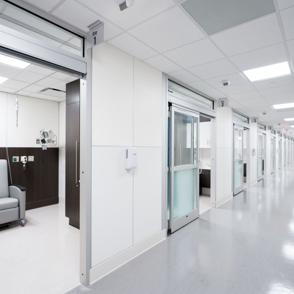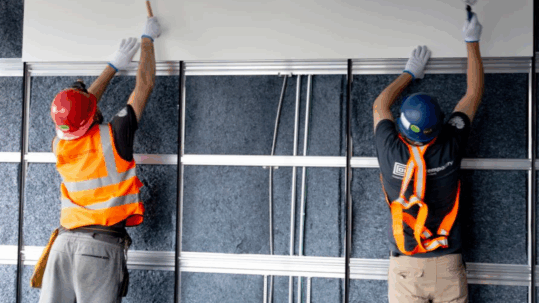Single patient rooms in hospitals are becoming a critical part of modern healthcare design. As NHS estates grapple with overcrowding, infection rates, and the urgent demands of the New Hospital Programme, the question isn’t whether single patient rooms are needed today, but how fast they can be delivered.
The move toward 100% single-occupancy rooms represents one of the most significant shifts in hospital infrastructure in decades. It addresses fundamental concerns around infection control, patient dignity and operational efficiency, but achieving this at scale requires a very different approach to design and construction.
The Problem Without Single Patient Rooms
For decades, multi-bed wards have been the default across NHS hospitals. While cost-effective at the time, they now pose increasingly untenable challenges. Shared rooms make infection control far harder, with respiratory illnesses like flu, RSV and COVID-19 able to spread rapidly between patients. According to the UK Health Security Agency’s 2023 survey, 8% of patients in acute NHS hospitals tested positive for a healthcare-associated infection (HCAI), rising to 15.9% in intensive care units.
Multi-bed layouts also compromise privacy and dignity. From end-of-life care to sensitive treatments, patients routinely report feeling exposed in shared rooms, with complaints around noise, sleep disruption and anxiety compounding recovery times. Staff are equally affected, as managing infection outbreaks in shared wards is resource-heavy and diverts focus from clinical care.
With NHS waiting lists surpassing 7.6 million people and an ageing estate (more than 30% of hospital buildings pre-date 1985), the pressure to redesign spaces that support better outcomes has never been greater.
The Solution: What is a Single Patient Room?
A single patient room is a private hospital room designed for one individual, typically with en-suite facilities and integrated clinical infrastructure. Beyond privacy, the design serves three core functions: infection control, operational efficiency and patient experience.
By physically separating patients, these rooms reduce the risk of cross-contamination, allow tailored clinical environments (such as negative or positive pressure for respiratory conditions) and create calmer spaces that aid recovery. Importantly, they also future-proof hospitals by enabling flexible layouts that adapt as treatment models and technology evolve.
The Benefits of Single Patient Rooms
The benefits of single patient rooms extend far beyond privacy. Studies show that temporary single-patient rooms can reduce healthcare-associated infections by around 16.5% and while broader evidence is somewhat mixed, multiple UK evaluations have reported perceived reductions in infection risk and clear patient preference for single rooms when compared to multi-occupancy wards.
In addition, qualitative evidence highlights significant improvements in sleep quality and privacy among patients in single rooms, both factors directly associated with better recovery outcomes and shorter stays.
For staff, single patient rooms in hospitals streamline workflow. Care teams can isolate patients without relocating them, reducing pressure on bed management during outbreaks. Rooms designed with modular systems, such as those by Architectural Wallsz, also enable rapid reconfiguration and can convert from standard patient rooms to higher-acuity spaces with minimal downtime.
Financially, the case is equally compelling. While upfront costs can be higher than traditional wards, single rooms reduce the hidden costs of infection outbreaks, readmissions and maintenance, while aligning with NHS net zero goals through sustainable materials and prefabrication.
Why Architectural Wallsz?
Architectural Wallsz is redefining how hospitals achieve 100% single patient room targets. We deliver prefabricated, modular rooms manufactured offsite and installed with minimal disruption. Our approach cuts build time by up to 30%, reduces material waste and creates spaces that can adapt to future needs.
Using our exclusive ICE® visualisation software, NHS trusts can see every detail of their project in real time, from layout to finish, before a single panel is built. This reduces uncertainty, accelerates approvals and ensures designs meet the exacting standards of HBN and HTM guidance.
For trusts facing crumbling estates, rising costs and mounting infection control pressures, single patient rooms could be a clinical imperative.
Are you ready to explore single patient rooms for your hospital?
Contact the team at Architectural Wallsz to see how modular interiors can help your trust meet future care demands today.






Sorry, the comment form is closed at this time.